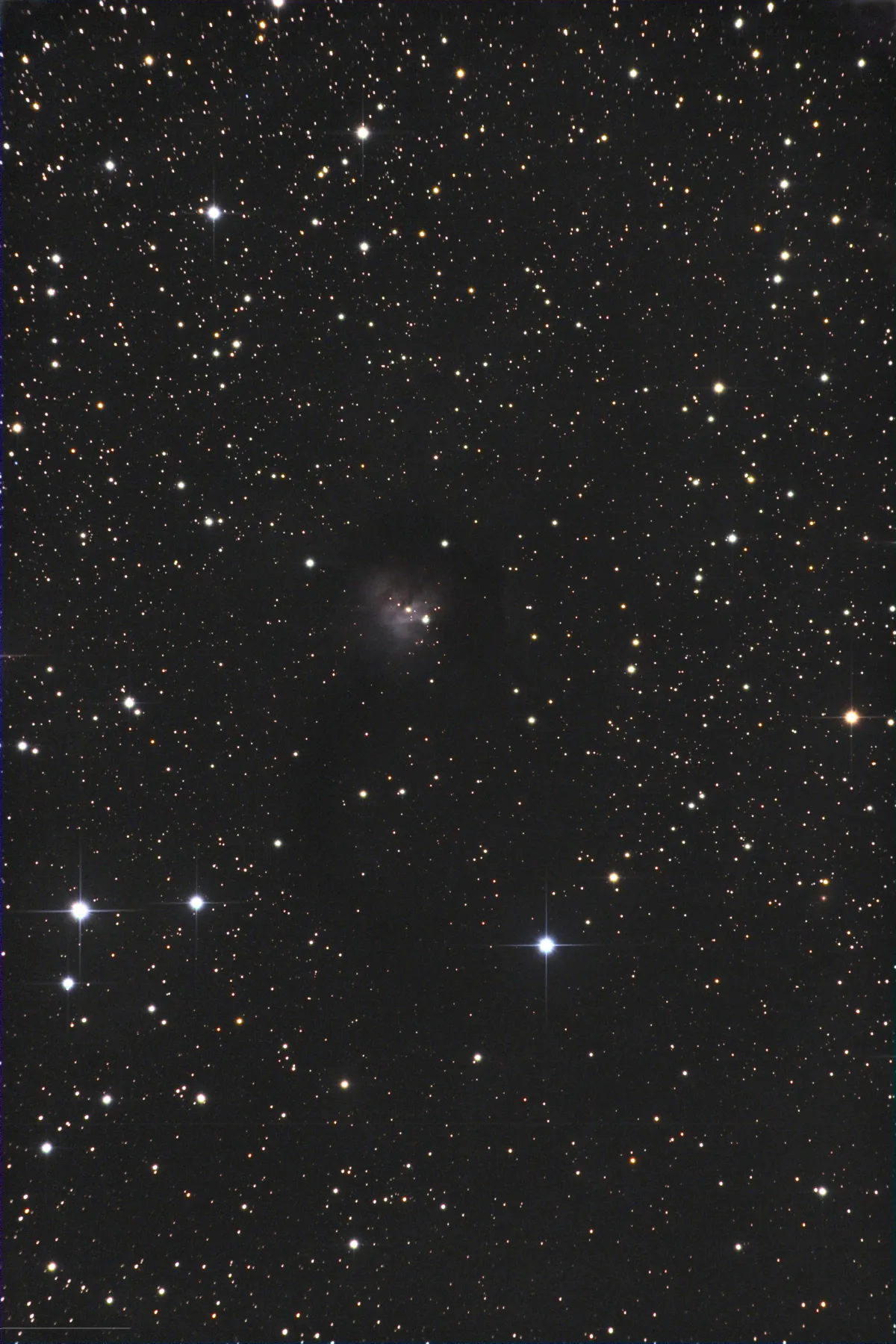Reflection Nebula Kr 2-1

Object Description
This nebula was discovered by A. Krasnogorskaya and published as Kr 2-1 in 1962. [423] Originally it was considered a planetary nebula, which is why it was recorded in 1967 by the two Czech astronomers Luboš Perek and Luboš Kohoutek under the designation PK 149-1.1. [146] In the following year the nebula was described by Kromov and Kohoutek as «a very washed out and irregular internal structure» and that there was «no certainty whether it was an emission nebula». [391] In 1977 it was recognized that the nebula does not fit the morphology of planetary nebulae as a possible reflection nebula. [393] This was also confirmed in 1982 in a study of CO molecular clouds, where strong CO emissions were also measured. [425]
A distance specification of this reflection nebula, which is listed under GN 03.47.9 in Simbad, is searched in vain. But the star (Gaia EDR3 251340116071393792) in the optical centre of the nebula has a parallax measured by the Gaia probe of 0.8337 ± 0.0401 milli-arcseconds (mas), which corresponds to a distance of approximately 4000 light years. [147] Presumably the light reflected by the nebula comes from this star. On the photo in fig. 1, a dark molecular cloud can still be seen around the reflection nebula.
| Name | GN 03.47.9 |
| Object Type | Reflection Nebula |
| Right Ascension (J2000.0) | 03h 51m 35s |
| Declination (J2000.0) | +51° 30' 00" |
| Identifiers | BFS 32; GN 03.47.9; IRAS 03478+5121; PK 149-01 1; PN ARO 210; PN Kr 2-1 |
Finder Chart
The reflection nebula Kr 2-1 is located in the constellation Perseus. The best observation time is July to April.
